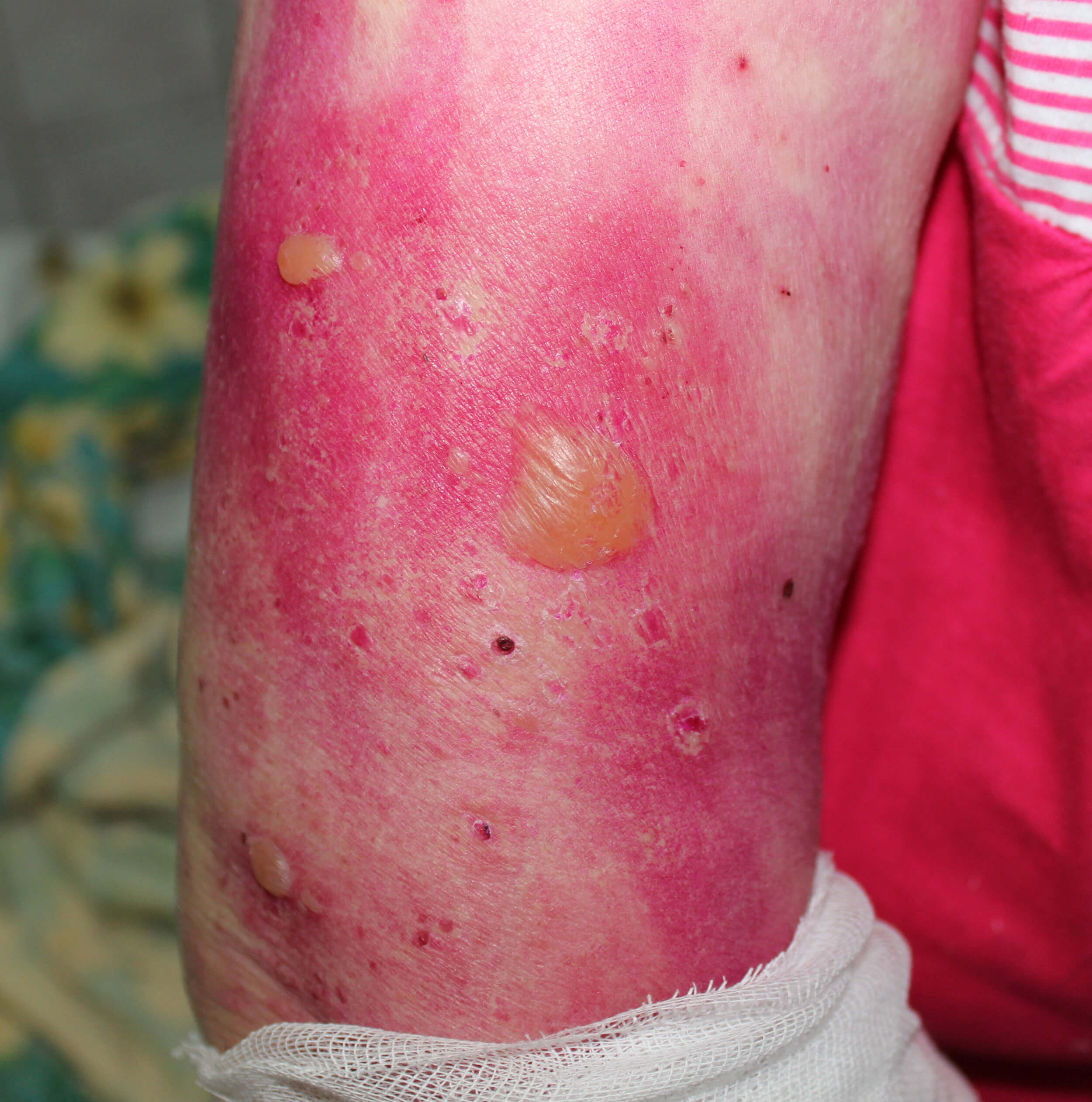An 80-year old woman presents with an itchy, blistering rash affecting her arms and trunk. She is systemically well, and her observations are normal. The rash is mainly localised to her right arm and is shown below:

1. What is the most likely diagnosis?
Show Answer
Bullous pemphigoid (BP) is a chronic, autoimmune, subepidermal, blistering skin disorder with an autoimmune basis. Pemphigoid can affect individuals of any age, but the mean age of onset is 80 years. It most commonly affects those over 50 years of age.
BP is the result of an attack on the basement membrane of the epidermis by IgG +/- IgE immunoglobulins and activated T lymphocytes. The binding of the autoantibodies to the proteins and release of cytokines from the T cells results in complement activation, recruitment of neutrophils and the release of proteolytic enzymes. These destroy the hemidesmosomes and cause the formation of subepidermal blisters.
The clinical features of BP include the following:
- The initial presentation of pemphigoid is very variable
- There is sometimes a non-specific erythematous rash that precedes the blisters by up to several weeks
- The blisters are large, tense and frequently itchy
- The blisters usually occur on the upper arms and thighs and may spread to the trunk
- Blister contents are often haemorrhagic
- The rash often appears in skin flexures
- The rash may affect a single site or be more widespread
- Blisters inside the mouth and in genital sites are uncommon
Question image used on licence from Shutterstock
Show Answer
Skin biopsy for histology and direct immunofluorescence is usually the investigation of choice. This shows mixed inflammatory infiltrate and a band of IgG and/or C3 at the dermo-epidermal junction. Circulating antibodies to IgG or C3 are found in 75% of cases.
3. How should this patient be treated?
Show Answer
Potent topical corticosteroid treatment (e.g. clobetasol) is often used as first-line treatment in localised disease. Topical corticosteroid treatment is better tolerated than oral steroids, particularly in the elderly. For more severe cases, systemic steroids along with immunosuppressives may be needed to control the disease.






Excellent knowledge improving case